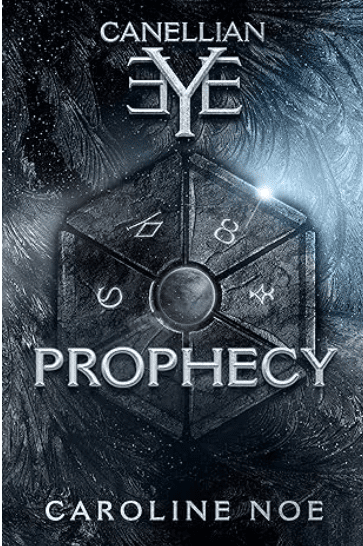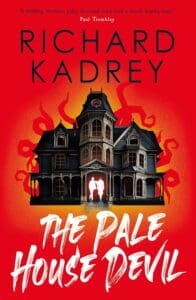
Synopsis:
Destiny can be savage
The towering monolith of Erulia’s Prophecy stood for millennia in the watery paradise of Canellia, its dire warning unheeded.
That time is long past.
In the wake of dying twin suns, this generation faces extinction under the onslaught of an Ice Age.
Then, in the depths of despair, a child is born, bearing a singular birthmark: the symbol of their foretold saviour, Jehul’s Eye.
Quaylan leads young survivors in an audacious leap into the stars, searching for their own Promised Land, ever certain of his identity.
But what if he’s wrong?
Review:
Caroline Noe is a multi-genre author of prodigious talent. The Ezekiel Factor is the book I know her best for (visceral, emotionally raw scifi – read it) but her most recent series, The Mangy Wolf Saga, is a humorous fantasy that comes highly recommended.
So why do I mention these things? Because their roots lie, perhaps, in this twist on the scifi and fantasy genres. Noe leads us through a story arc that starts with a prophecy, and finishes with the trauma of a people realising that said prophecy may have failed them. In between we get a scifi-fantasy story filled with a clash of alien cultures, love, pain, social and emotional isolation and, above all else, loss.
Such a weave can be hard to achieve, and Noe does a fine job with her usual fluid prose to lead the reader through. So, let’s start at the beginning.
Canellia is dying. And we are led through the stages of the planet’s death by the author, charting a people whose last hope lies in a prophecy and a chosen who is to lead some to safety. They sacrifice everything to save the few who leave for the stars. The final death-throes of the Canellians are so painful to read. From there, desperate after millennia of travel, the chosen are forced to land on a desolate, hot planet, sparsely populated by a people who culturally are as distant from their own as possible.
It is here where the elements of a fantasy story develop, and for me, I found a growing connection with some of the side characters rather than the main leads because, though their arc was a tragedy, it forged the background for the rest of the characters to play out and grow. There are some time leaps, and I can understand why these are there. For some they might prove disconcerting, but read on, it worked for me.
I won’t spoil the book further, only to say the seeds of a great series lay in how Noe nurtures this story to the denouement. I am sure there is both revolution and more tragedy to follow, and I will be ready.









Leave a Reply